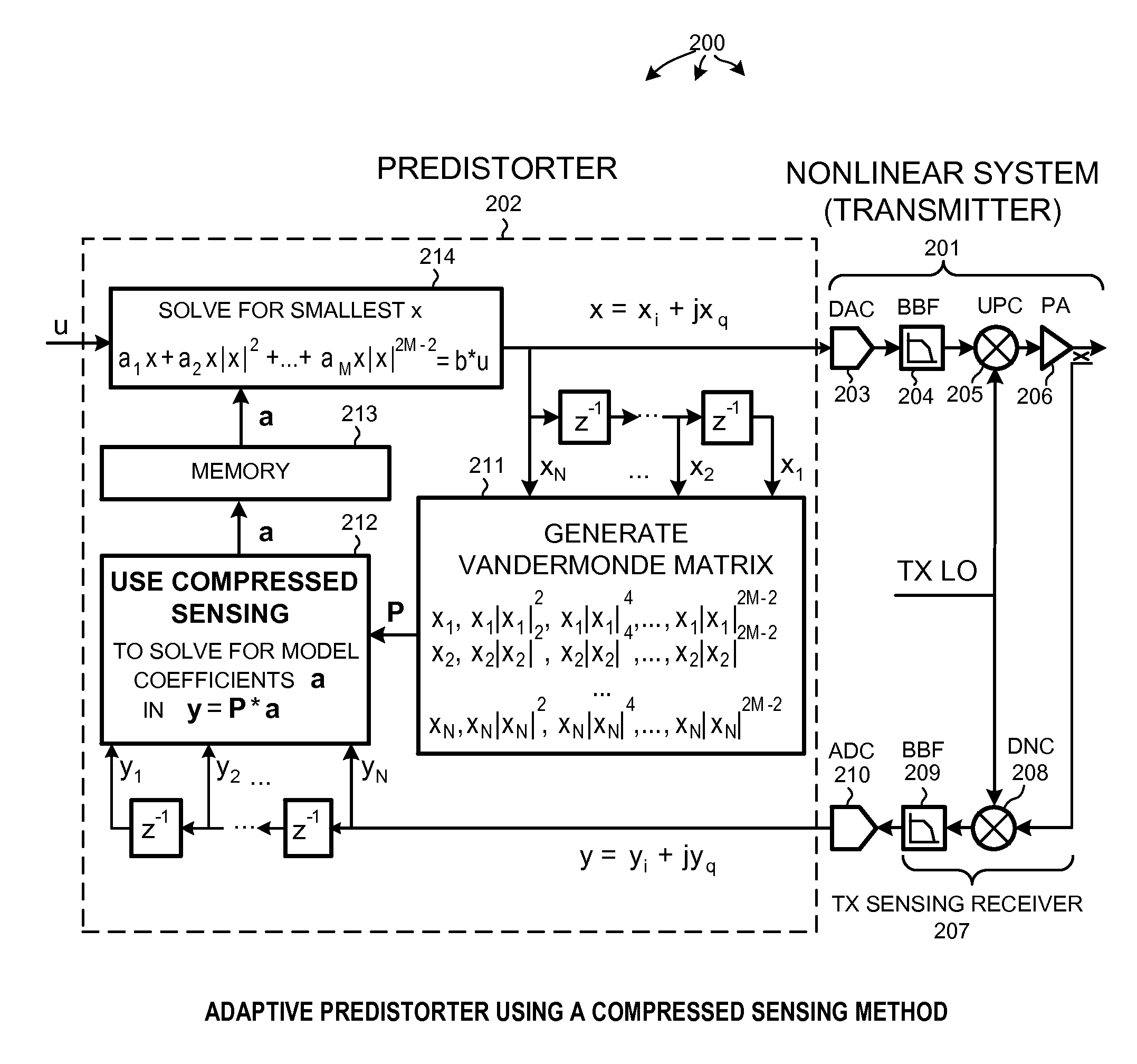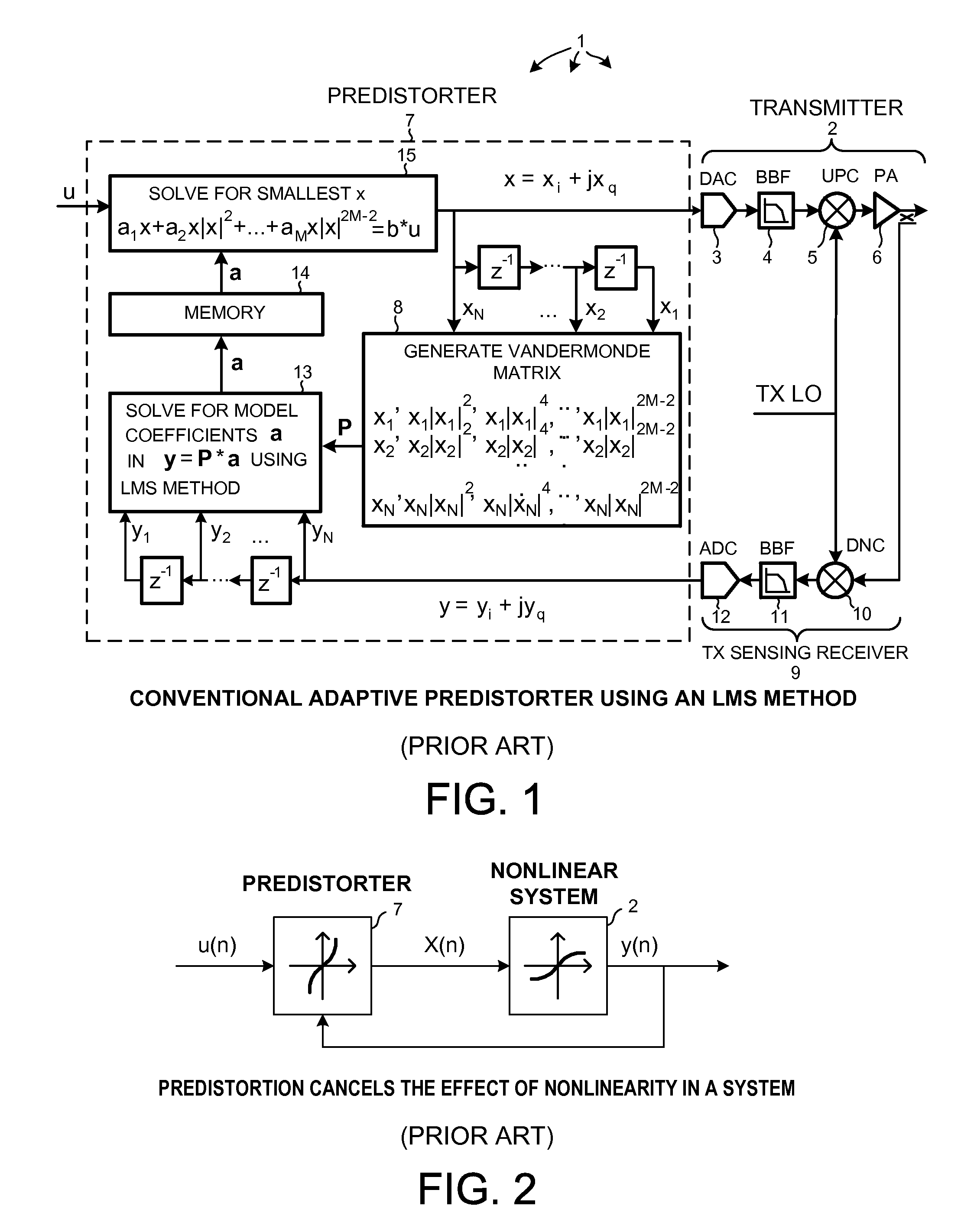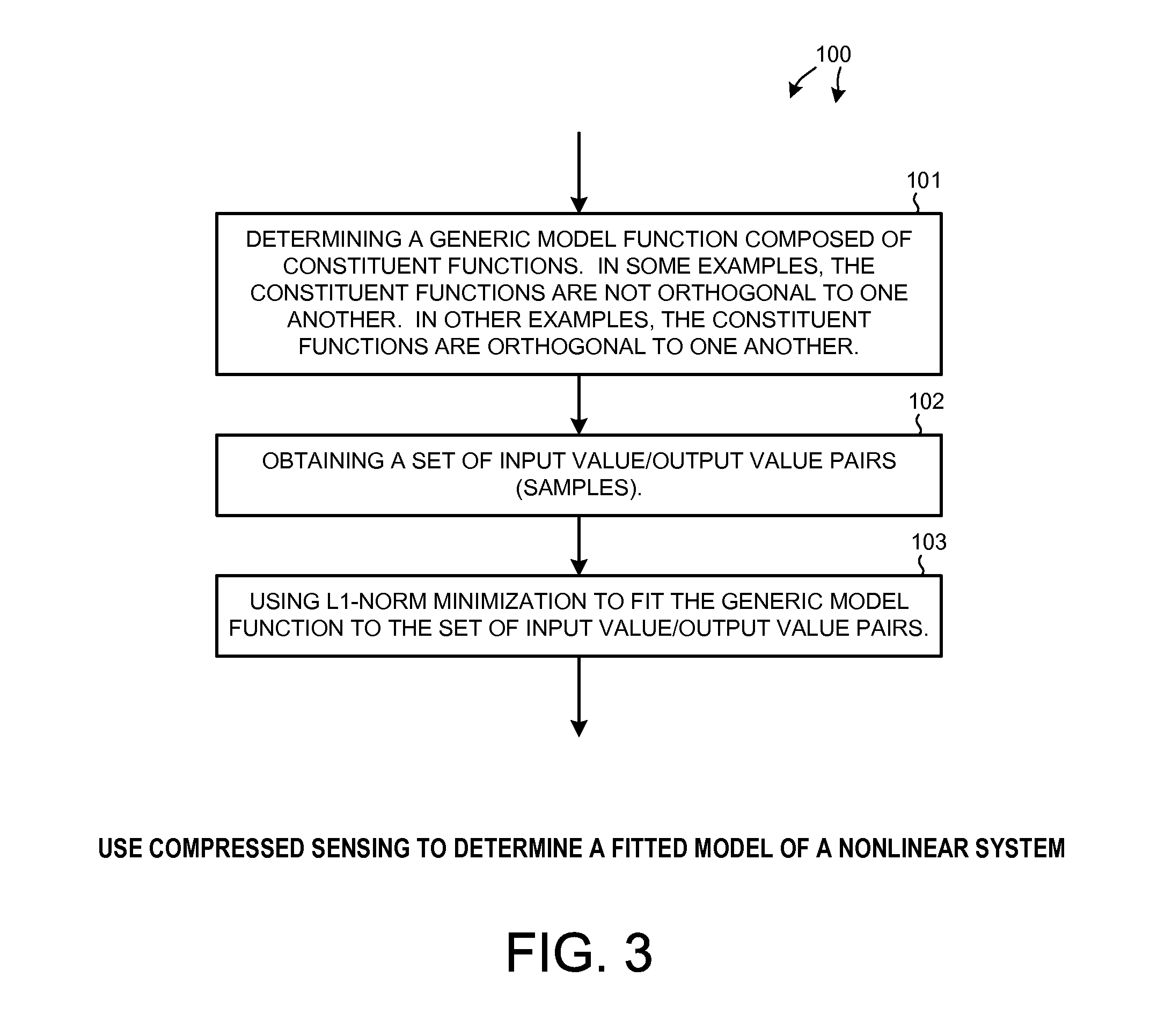Nonlinear identification using compressed sensing and minimal system sampling
a compressed sensing and system sampling technology, applied in the field of nonlinear system model, can solve the problems of large amount of processing power required to perform the necessary computation, large number of sample data points to be taken, and difficulty in real-time application of methods
- Summary
- Abstract
- Description
- Claims
- Application Information
AI Technical Summary
Benefits of technology
Problems solved by technology
Method used
Image
Examples
Embodiment Construction
[0028]FIG. 3 is a flowchart of a method 100 in accordance with one novel aspect. In step 101 of FIG. 3, a generic model (also referred to as a generic model function) is determined where nonlinearities of a system are represented by constituent functions. Statistical properties of an input signal x to be supplied to the system may be used to determine the most appropriate type of generic model function. Different types of generic model functions are better suited to modeling systems where the systems are processing different kinds of input signals x.
[0029]There are several ways to determine the generic model function. There are multiple ways of selecting the generic model function. In a first way, the generic model function selected is a function whose constituent functions are not orthogonal to one another. The generic model function is, however, sparse in terms of the coefficients of the constituent functions. The generic model function selected may, for example, have a basis of p...
PUM
 Login to View More
Login to View More Abstract
Description
Claims
Application Information
 Login to View More
Login to View More - R&D
- Intellectual Property
- Life Sciences
- Materials
- Tech Scout
- Unparalleled Data Quality
- Higher Quality Content
- 60% Fewer Hallucinations
Browse by: Latest US Patents, China's latest patents, Technical Efficacy Thesaurus, Application Domain, Technology Topic, Popular Technical Reports.
© 2025 PatSnap. All rights reserved.Legal|Privacy policy|Modern Slavery Act Transparency Statement|Sitemap|About US| Contact US: help@patsnap.com



